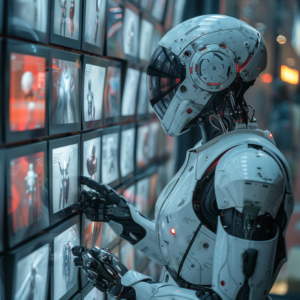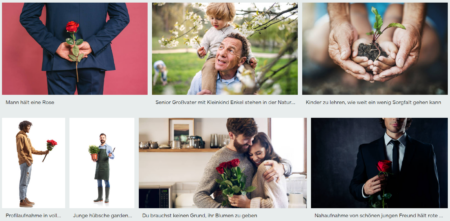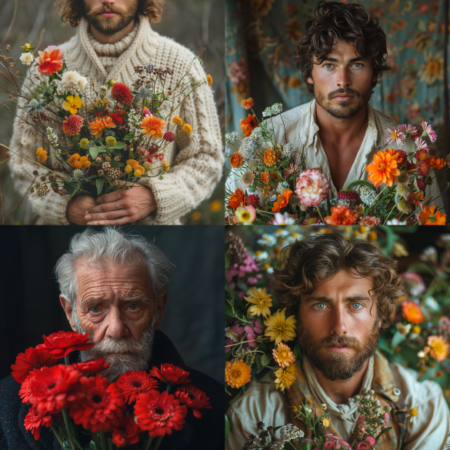
In recent years, the advent of artificial intelligence (AI) has revolutionized various industries, and the realm of image generation is no exception. AI-powered image generation systems, particularly those employing generative adversarial networks (GANs), have gained significant traction for their ability to produce remarkably realistic images indistinguishable from those captured by cameras. While this technological advancement presents exciting opportunities for creativity and innovation, it also introduces challenges and risks, particularly for stock photo sites.
How image generation AIs are threatening stock photo platforms
There are several reasons that should have stock photo platforms worried when it comes to AI imagery.
1. AI can replace stock photo
Now that several major image-generating AI websites have started to produce realistic outcomes, artificially generated images become serious contenders for stock photo images. In fact, they may be more flexible in terms of results, as you can redefine your prompts as long as you are not happy and change framing or details, such as the color of the sweater of the people on your “photo”.
We did a little test with the first results on a simple search/prompt.

Results for a search on the keywords “man holding flowers” on a popular stock photo site.

Result for a prompt with the keywords “man holding flowers” on MidJourney.
2. Users will question the authenticity of stock photos
AI-generated images pose a threat to the integrity and authenticity of content hosted on stock photo platforms. As these AI systems become increasingly sophisticated, they can effortlessly fabricate high-quality images of virtually anything, including landscapes, people, and objects, with minimal human involvement. This raises concerns regarding the proliferation of counterfeit or manipulated visuals within the stock photo ecosystem, blurring the line between genuine and synthetic content. Consequently, the credibility and reliability of stock photo sites as trusted sources of authentic imagery could be compromised, potentially leading to diminished user trust and engagement.
3. Copyright infringement issues
The proliferation of AI-generated images could exacerbate issues of copyright infringement and intellectual property rights, as distinguishing between original and AI-generated content becomes increasingly challenging. Thus, while AI image generation holds promise for unlocking new creative possibilities, its unchecked proliferation poses significant risks for the long-term viability and integrity of stock photo platforms.
How stock photo sites can embrace AI technology
Stock photo sites can strategically leverage AI to enhance their offerings and stay competitive in the evolving landscape of digital imagery. Here are several ways they can embrace AI:
- Content Curation and Recommendation: Stock photo platforms can utilize AI algorithms to analyze user preferences, search patterns, and historical data to offer personalized recommendations to users. By understanding individual user preferences, AI can curate collections of images tailored to specific needs, improving user experience and satisfaction.
- Content Moderation: AI-powered content moderation systems can help stock photo sites efficiently filter and screen images for inappropriate or offensive content. By automating this process, platforms can ensure a safer and more reliable environment for users while reducing the burden on human moderators.
- Enhanced Search and Tagging: AI algorithms can be employed to automatically tag and categorize images based on their content, making it easier for users to discover relevant photos. Advanced image recognition techniques can accurately identify objects, scenes, and concepts within images, enabling more precise search results and improved navigation on the platform.
- Image Enhancement and Editing Tools: Stock photo sites can integrate AI-driven image enhancement and editing tools to empower users to enhance the quality of their photos. AI algorithms can automatically adjust colors, contrast, and composition, as well as remove imperfections or noise from images, providing users with professional-level editing capabilities.
- AI-Generated Content Creation: While AI-generated images pose risks, stock photo sites can cautiously explore the use of AI to augment their content creation efforts. AI can be used to assist photographers and artists in generating new, original content by providing creative inspiration, generating concept sketches, or automating repetitive tasks.
- Dynamic Pricing and Licensing Models: AI-powered analytics can help stock photo sites analyze market trends, user behavior, and demand patterns to dynamically adjust pricing and licensing models. By optimizing pricing strategies in real-time, platforms can maximize revenue while offering flexible and cost-effective options to users.
By embracing AI technologies strategically and responsibly, stock photo sites can not only improve their operational efficiency and user experience but also unlock new opportunities for growth and innovation in the dynamic digital imagery market.

